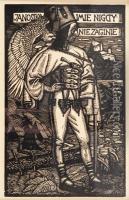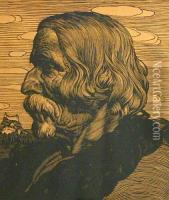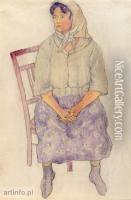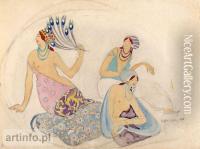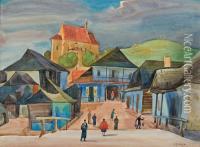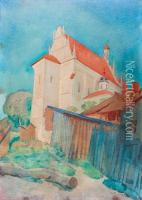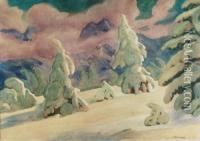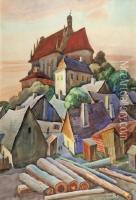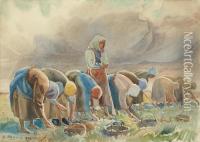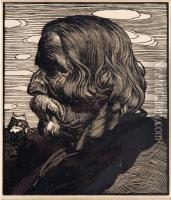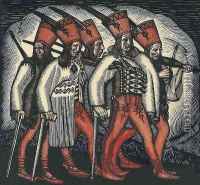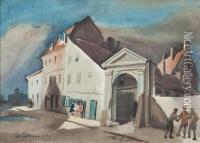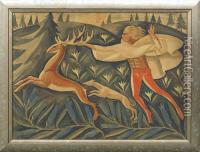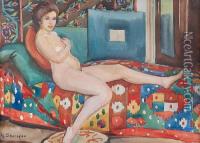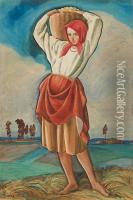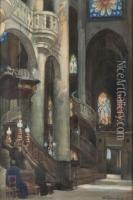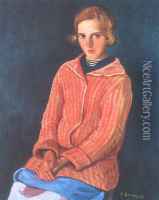Wladyslaw Skoczylas Paintings
Wladyslaw Skoczylas was a Polish artist, woodcut printmaker, illustrator, and teacher known for his significant contribution to Polish art in the early 20th century. He was born on September 13, 1883, in Leńcze, Austria-Hungary (now part of Poland). Skoczylas's artistic journey began at the Kraków Academy of Fine Arts, where he studied under the guidance of prominent professors such as Jan Stanisławski and Józef Mehoffer.
Skoczylas's style was deeply rooted in Polish folk art traditions, and he drew inspiration from the rural landscapes and the everyday life of Polish peasants. His artworks often depicted scenes of the Polish countryside, religious motifs, and historical events. He was particularly known for his mastery in woodcut prints, which he elevated to a form of high art through his intricate designs and expressive use of the medium.
In 1910, Skoczylas became a professor at the State School of Arts and Crafts in Warsaw, where he influenced a generation of Polish artists. His pedagogical approach emphasized the importance of national heritage and the integration of folk motifs into modern art. Throughout his career, Skoczylas was actively involved in the Polish art scene, participating in numerous exhibitions and contributing to the development of art education in the country.
Skoczylas's commitment to Polish culture extended beyond his art. During World War I, he was engaged in the fight for Polish independence. After the war, he continued to promote Polish cultural identity through his work as an artist and educator. In the 1920s, he was appointed the director of the Arts and Crafts School in Warsaw, where he continued to foster the growth of Polish arts and crafts.
Wladyslaw Skoczylas's contributions to Polish art were cut short by his untimely death on May 8, 1934, in Warsaw, Poland. Despite his relatively short life, his legacy lived on through his prints, illustrations, and the influence he had on his students and contemporaries. Skoczylas remains a celebrated figure in Polish art history, remembered for his passion for Polish traditions and his innovative approach to the woodcut technique.
